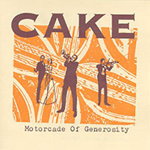This review page is supported in part by the sponsors whose ad banners are displayed below |
|
 |
|
 |
|
If you’re getting antsy about two full paragraphs being wasted on a trite alarm clock, ‘twas but a pointy finger at where my journey with the Ardora was headed: top resolution with extremely low distortion and the type of plasticity I associate exclusively with successfully tweaked time alignments. Whenever percussive noises i.e. transients rise this believably and nearly materialized in the room, it’s nearly always associated with the time domain. I’ve encountered this before with the big Surrountec speakers at the Munich HighEnd show; at Bielefield’s Hört sich gut an shoppe with Ascendo’s big System M-S; and in my own digs with their System F or the Myro Whisky.
|
|

|
|
 |
And now the Audiograde. For another real-world noise I picked "Rock’n’Roll Lifestyle" from Cake’s Motorcade of Generosity album. Before the song begins in earnest, someone lights up a fag but requires two attempts before the match takes. I had to giggle. That was the sound of a match. No more, no less, just the pure tactile essence of ignition. Right after its extinguishing with a blow which was just as real, a shaker comes in at stage left and I nearly felt compelled to count its grains. In short, this speaker acted like an acoustic loupe sans pareil. |
|
|
|
|
When on "Somedays" from her album Soviet Kitsch Regina Spektor opens her lips and moves her tongue just a tad before breaking out in song, one ‘sees’ it clearly. Nothing gets obscured, nothing is forced, brightened, emphasized or artificially hyped. It’s astonishing how clearly such a tiny signal can be rendered. I couldn’t say whether in matters of raw magnification power the Ardora is the very last word. What if tomorrow a €50’000 box knocks on my door and does even more? What do I say then? All I know is that until today, I’ve not heard more. Where the most extreme unraveling of minutiae is concerned, the Audiograde played at the very front of the line. Listening in full HD.
|
|
|
|
|
|
|
|
|
|
|
|
|
This seemed possible not only because Accuton’s famed ceramic units track such data in the first place but because Audiograde's filter network and enclosure don’t suffocate it but ‘let it pass’. One assumes that Szentiks’ overkill vibration-attenuating casting has a lot to say here (or rather not). That’s because acoustic distortions counted with their absence. The sonic imagery was unusually pure and clean. Yet there’s more. Because the boxes don’t talk but remain mum like mummies, they disappear as apparent sound sources. Bigger speakers routinely stand in their own way to sound like boxes. Certain listeners are nearly allergic to this effect to favour top-quality monitors whose reduced dimensions minimize resonance modes and become lesser acoustic hindrances.
|
|
 |
|
|
|
Whilst the Ardora is no fridge, it’s certainly no compact. Even so it behaved as one of the most freely imaging speakers I’ve hosted. Individual sounds showed up in high focus, compact and grippy regardless of whether dead center or at the fringes, upfront or far back. And—which happens rarely—regardless of frequency. To nail a voice to the cross hairs in the middle is easy. Things get rather more interesting in the outer bands. Cymbal hits can bloom like the Milky Way, bass runs appear as though from everywhere. Not with the Ardora.
|
|
|
|
|
 |
Nik Bärtsch’s "Modul 15" from Randori kicks of with solo e-bass. Clearly my Dynamikks move more air to render this with greater physicality and punch. But with the Audiogrades the tone was more precisely defined in space. Like a muscular dwarf this sinuous bass pattern revolved in the center of the stage whilst the Dynamikks had it more like a sportily suspended wall. Two readings both with their own charm but different. Interesting.
Let’s take stock. What defines the Audiograde? Resolution, resolution, resolution. The ability to reveal the smallest sonic nuance is very high. Nothing eludes us. Then the staging is most liberated, focused, outline-specific and dimensional. Not that I hadn’t heard this before. Aside from the aforementioned speakers I’d call out Blumenhofer’s Genuin FS2. But in combination with such magnification powers the imaging too occurs at uncanny transparency. Even so the actual scale of the virtual stage was ‘normal’. 16:9 aspect-ratio panorama sound wasn’t on this menu. Depth layering will be as good as it’s been encoded on the recording. First rate but other flagships certainly cover the same ground. The imaginary stage begins right at the base line. It’s neither moved forward or back. Here too things were textbook.
|
|
|
 |
|
 |
|